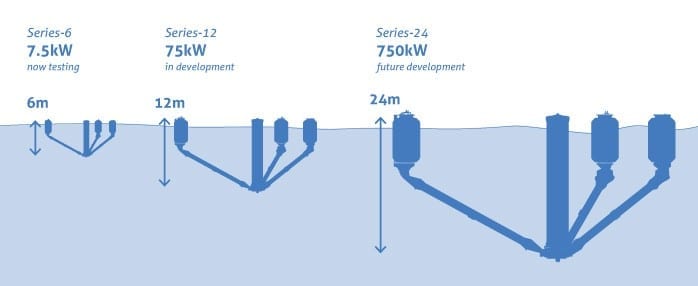
via beautifulnow.is
Conservationists are always looking for ways to halt the pace of deforestation in tropical rainforests. One approach involves recultivating abandoned agricultural land.
An international team* investigating this concept has just published its findings in Nature Communications. Working in the mountainous regions of Ecuador, the researchers found afforestation and intense pasturing to be particularly effective, clearly increasing the environmental and economic value of abandoned farmlands.
Every year, 130,000 square kilometers of rainforest disappear from the face of the earth – an area equivalent to the size of Greece. The majority of this land is cleared for agricultural development – even in tropical mountain areas. These fields are quickly overgrown with weeds, however. Bracken is particularly tenacious. It cannot be permanently eliminated using herbicides or by burning the land. As a result, farmers often abandon the land after a few short years and start clearing new areas of forest.
“This cycle has to be broken,” explains Prof. Thomas Knoke from the Institute of Forest Management at Technische Universität München (TUM). Prof. Knoke is lead author of the study that has just been published. “We’ve been investigating whether this abandoned pasture land can be recultivated, and if so, how.”
The team did not just look at economic benefit when evaluating the different concepts. For the first time, this study also took environmental and socio-cultural criteria into consideration, factoring in issues such as the amount of carbon dioxide and nitrogen assimilated by plants and soil, biomass production, soil quality, impact on climate, water management and acceptance among farmers.
Sustainable land use
The area under investigation (around 150 hectares) is located in the Ecuadorian Andes at an altitude of between 1,800 and 2,100 meters. The researchers looked at five different concepts:
- No land use – abandoned land is left to nature
- Afforestation – planting a native species of alder
- Afforestation – introduction of a non-native pine species
- Extensive pasturing – mechanical weed control followed by initial fertilization and land use
- Intense pasturing – chemical weed control and land use with regular fertilization
Afforestation with alder and pine species proved particularly sustainable. In addition, forested regions offer the best protection against erosion in the long term. “Our study also showed that afforestation with the native Andean alder had a much more positive impact on the climate and water balance than the other land use options,” adds Prof. Jörg Bendix from Phillips-Universität Marburg.
Engaging the farmers – a key factor
Typical rainforest flora and fauna are also able to gradually recolonize afforested regions. Intense pasturing scored much higher on the ecological scale than extensive pasturing. Economic benefits stemmed from the sale of wood (afforestation) or the sale of meat and milk (pasturing). Alder plantations achieved the greatest financial returns.
A survey conducted among land users showed that the majority of livestock farmers also viewed afforestation as the best land use option due to the positive ecological balance and greater long-term earnings potential. “If we want recultivation concepts to be a success, the people using the land have to be engaged,” elaborates Bendix.
The Latest on: Rainforest protection
[google_news title=”” keyword=”Rainforest protection” num_posts=”10″ blurb_length=”0″ show_thumb=”left”]
via Google News
The Latest on: Rainforest protection
- Indigenous women are leading an 'invisible fight' in Ecuador's Amazon Rainforeston May 6, 2024 at 4:59 pm
The Yuturi Warmi, an all-women Ecuadorian patrol, has vowed to protect their community's land in the Amazon Rainforest from the pollution of extractive industries – and their efforts appear to be ...
- Akaku Upstairs – The Green Wave: Mauion May 6, 2024 at 4:59 pm
which showcases the threats our Hawaiian islands are facing and highlights the solutions our communities are implementing from rainforest conservation to ocean preservation. Panelists include the ...
- Japan and Brazil agree to protect Amazon rainforest togetheron May 6, 2024 at 1:41 am
Japanese Prime Minister Fumio Kishida and Brazilian President Luiz Inacio Lula da Silva agreed Friday to strengthen efforts to combat climate change, in ...
- Japan, Brazil agree to jointly protect Amazon rainforest, develop sustainable fuelon May 5, 2024 at 11:56 pm
We use cookies to improve your website experience and to analyse our traffic. We also share non-personally identifiable information about your use of our site with our analytics partners. By ...
- Japan and Brazil Forge Agreement to Collaborate on Protecting Amazon Rainforeston May 5, 2024 at 12:37 pm
Japanese Prime Minister Fumio Kishida and Brazilian President Luiz Inacio Lula da Silva have pledged to intensify their efforts to combat climate change, with a particular focus on protecting the ...
- Japanese PM, Brazilian leader vow cooperation on Amazon rainforest protectionon May 4, 2024 at 8:28 pm
The Amazon rainforest, the largest tropical rainforest in the world ... This positive trend reflects ongoing efforts to combat deforestation and protect the invaluable biodiversity and ecosystems of ...
- Japanese, Brazilian leaders agree to protect Amazon rainforeston May 4, 2024 at 1:19 am
Japanese and Brazilian leaders agreed to cooperate to protect the Amazon rainforest while strengthening efforts to combat climate change, local media said on Saturday. Japanese Prime Minister Fumio ...
- Japan, Brazil agree to jointly protect Amazon rainforeston May 3, 2024 at 8:21 pm
Japanese Prime Minister Fumio Kishida and Brazilian President Luiz Inacio Lula da Silva agreed Friday to strengthen efforts to com ...
- The Sargasso Sea: why this ‘golden floating rainforest’ urgently needs protectingon May 1, 2024 at 5:00 pm
Every second breath we take comes from the oceans – they’re the biggest producer of oxygen on the planet – even more than the Amazon Rainforest. Here’s what you need to know about this incredible ...
- Deforestation Wiped Out 8% of Amazon in 18 Years: Studyon April 25, 2024 at 5:00 pm
Bolsonaro has come under fire from environmentalists and the international community for cutting funding for rainforest protection programs and pushing to open protected lands to agribusiness and ...
via Bing News










